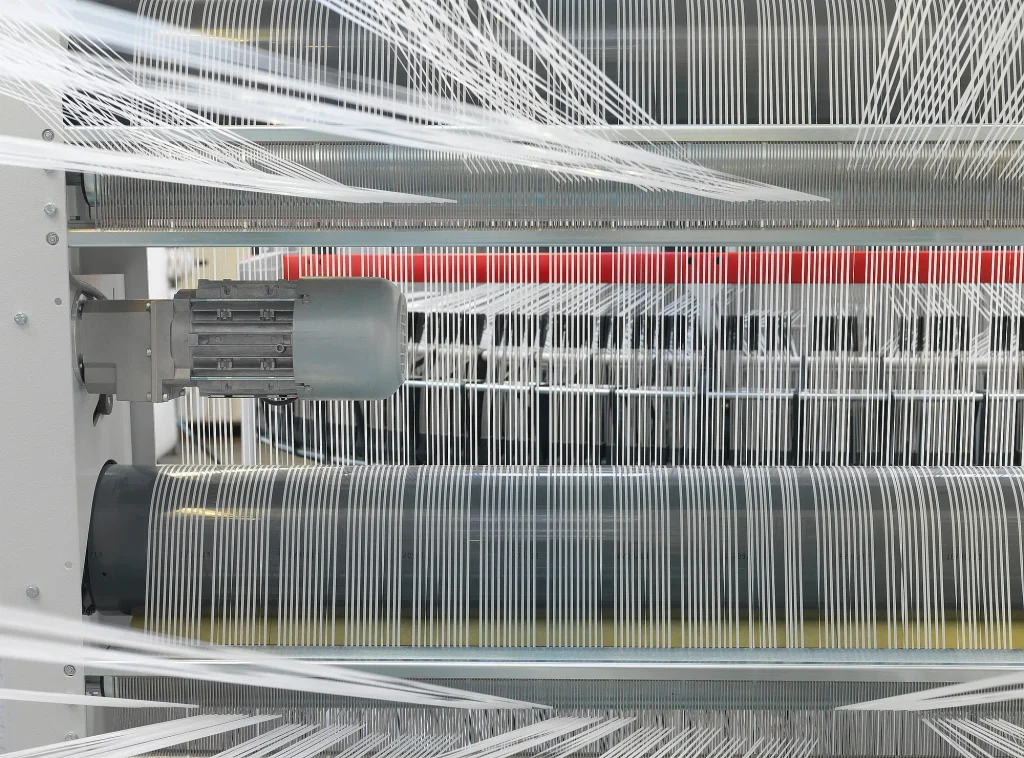
**At VidePak, recyclable polypropylene (PP) woven bags are redefining industrial packaging by merging environmental stewardship with unmatched durability. With **95% recyclability rates, load capacities up to 2,000 kg, and compliance with EU Directive 94/62/EC, our solutions reduce landfill waste by 70% while delivering cost savings of 20–30% compared to non-recyclable alternatives. Backed by 30+ years of expertise and 100+ Starlinger circular looms, VidePak serves global clients in agriculture, construction, and chemicals, producing 120 million bags annually with ISO 9001-certified precision.
1. Material Advantages: Why PP Stands Out
Polypropylene’s inherent properties make it ideal for sustainable packaging. Unlike traditional plastics, PP is lightweight, chemically inert, and fully recyclable without compromising strength.
Key Attributes of VidePak’s PP Bags
- Recyclability: 100% virgin PP granules ensure homogeneity, enabling 5–7 reuse cycles before pelletizing.
- Durability: 14×14 weave density fabric achieves tear resistance ≥18 N/mm² (ISO 13937-2), outperforming HDPE bags by 25% in abrasion tests.
- UV Resistance: Additives like Chimassorb 119 extend outdoor lifespan to 2,000+ hours (ISO 4892-3), critical for agricultural storage in tropical climates.
Case Study: A European fertilizer client reduced annual packaging costs by €150,000 after switching to VidePak’s reusable PP bags, which withstand 1,500 kg overloads without seam failure.
2. Socioeconomic Impact: Balancing Profit and Planet
Recyclable PP bags generate tangible economic and environmental benefits across industries.
Cost Efficiency vs. Environmental Impact
| Metric | VidePak PP Bags | Traditional Packaging |
|---|---|---|
| Material Cost | $0.12–$0.18/bag | $0.20–$0.30/bag (multi-layer PE) |
| Carbon Footprint | 1.2 kg CO₂e/bag (cradle-to-gate) | 2.5 kg CO₂e/bag |
| Waste Reduction | 70% landfill diversion | 30% landfill diversion |
Example: A U.S. pet food brand achieved Zero Waste certification by adopting VidePak’s PP bags, which integrate QR codes for traceability and closed-loop recycling partnerships in 15 countries.
3. Regulatory Compliance: Navigating Global Standards
Governments worldwide are tightening packaging regulations, making recyclability a legal imperative.
Key Regulations and VidePak’s Compliance
- EU Circular Economy Action Plan: Mandates 65% packaging recycling by 2025. VidePak’s bags exceed this with 95% recyclability.
- U.S. EPA Wastewise Program: Rewards landfill diversion. Our clients report 40–60% waste reductions.
- China’s Plastic Ban: Prohibits single-use plastics in major cities. VidePak’s reusable PP bags offer compliant alternatives.
Quality Assurance: Our in-house lab conducts dart impact (≥500 g, ASTM D1709) and melt flow index (MFI 2–6 g/10 min, ASTM D1238) tests, ensuring compliance across 50+ markets.
4. Future Trends: Innovating Beyond Recycling
VidePak is pioneering next-gen solutions to align with global sustainability goals.
Emerging Technologies
- Smart Recycling Systems: RFID tags enable real-time tracking of bag lifecycles, trialed with a German pharmaceutical client managing 50,000+ units.
- Bio-Based PP: Pilot projects with 30% plant-derived resins reduce carbon footprints by 25% (ISO 14040 LCA).
- Degradable Additives: Oxo-biodegradable masterbatches enable partial decomposition in 18 months, meeting ASTM D6954-04 standards.
Industry Shift: By 2030, 75% of EU manufacturers will require recyclable packaging—VidePak’s R&D team is already developing PP-PLA blends for 100% compostability.
5. Product Specifications and FAQs
Technical Parameters
| Parameter | Specification | Testing Standard |
|---|---|---|
| Load Capacity | 500–2,000 kg | ISO 6346 |
| Fabric GSM | 80–150 | ASTM D3776 |
| Recyclability | 95% (5 cycles) | EN 13432 |
| Print Durability | 4/5 Sutherland Rub Test | ASTM D5264 |
FAQs
Q: How do PP bags compare to paper alternatives in humid conditions?
A: PP’s moisture resistance (<5 g/m²/day WVTR) prevents degradation, unlike paper, which loses 40% strength at 80% RH.
Q: Can bags be customized for food-grade applications?
A: Yes—FDA-certified inks and PE liners ensure compliance with EU Regulation 10/2011 for direct food contact.
Q: What is the MOQ for custom designs?
A: 10,000 units, with samples delivered in 10 days via express shipping.
6. Conclusion
VidePak’s recyclable PP bags exemplify how industrial packaging can drive sustainability without sacrificing performance. By integrating advanced materials, regulatory expertise, and closed-loop systems, we empower businesses to meet ESG goals while optimizing costs.
References
- VidePak Official Website: https://www.pp-wovenbags.com/
- Email: info@pp-wovenbags.com
- Related Articles:
- Exploring Eco-Friendly Woven Bags: Sustainable Packaging Solutions
- Sustainable FIBC Bulk Bags: Compliance and Ethical Practices
Authored by VidePak’s Sustainability and Compliance Team | Updated: March 19, 2025